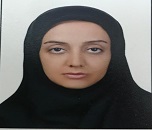Theme: Theme: Emerging Covid-19 Challenges in Emergency Medicine
emergency medicine 2022
We are glad to welcome you to the "5thInternational Conference on Emergency & Acute Care Medicine" during July 18-19, 2022 at London, UK, focusing on the theme “Emerging Covid-19 Challenges in Emergency Medicine”. We cordially invite all the participants to share their knowledge and research in the area of Emergency Medicine & Acute care.
International Conference on Emergency Medicine and acute care aims to gather doctors, Professors, Nurses, Physicians, Pharmacists, eminent scientists, research scholars, and educationists etc.to express their views on the latest technologies, trends and concerns in field of emergency medicine. It focuses on addressing the constant effort being made by scientist and scholars to improve the existing and inventing trending technologies for future.
Emergency Medicine 2022 comprises leading keynote speakers, session speakers, poster presenters who presents their advanced research on the topics such as Emergency medicine and acute care, Pediatric Emergencies, Toxicological Emergencies, Emergency Nursing, Endocrine Emergencies, Dermatologic Emergencies, Cardiac Emergencies, Anesthesia, Wound and burns, Neurologic Emergencies, Psychiatric/ Social Emergencies, Orthopedic Emergencies/ Musculoskeletal. A variety of hospitals and Medical Associations will display Medicinal products and services that provide solutions for emergency medicine and acute care.
The intending participants can confirm their participation by registering for the Emergency Medicine Conference along with your colleagues. Avail the delegate early bird offer.
Abstract Submission
Submit your abstract now and present your research in front of an international audience! Please make sure that your abstract must contains 250-300 words.
Early Bird Registration
Interested speakers and delegates register for the Conference and book your slot at Emergency Medicine 2022. For group registrations and packages reach us at "emergencymedicine@europeconferences.com".
Target Audience
- Hospitals
- Doctors & Physicians
- Pharmaceutical companies
- Research Scholars
- Industrial Professionals
- Clinical Researchers
- Healthcare Professionals
- Professors and students from colleges and universities
- Business delegates and Intelligence experts
- YRF(Young Research Forum)
Who should attend?
- Critical Care Physicians and Specialists
- Department Paramedics Critical Care ICU
- Critical Care and Emergency Medicine Nurses
- Paramedical, Ambulatory Care
- Trauma Surgeons
- Delegates,YRF(Young Research Forum)
- Trauma
- Burns
- Critical Care Units
Track 1: Emergency medicine
Emergency medicine, also known as accident and emergency medicine, is the medical specialty aimed at treating or injuries or illnesses that require swift medical attention. Emergency doctors treat unscheduled and undifferentiated patients of all ages. As first-line providers, your primary responsibility is to initiate resuscitation and stabilization and to initiate investigations and interventions to diagnose and treat diseases in the acute phase. Emergency physicians generally work in emergency departments of hospitals, prehospital settings through emergency medical services and intensive care units, but they can also work in primary care settings, such as urgent care clinics.
Associations & Universities : Royal College of Emergency Medicine |KCL Emergency Medicine Society |European Society for Emergency Medicine |The Irish Association for Emergency Medicine |Association of Paediatric Emergency Medicine |Harvard University of Emergency Medicine |University of Oxford of Emergency Medicine |University of Cambridge of Emergency Medicine |Stanford University of Emergency Medicine |Johns Hopkins University of Emergency Medicine |Yale University of Emergency Medicine.
Track 2: Cardiac Emergency
Cardiac diseases are the most dangerous issue that must be dealt with soon to limit morbidity and mortality. One of the main purposes behind individuals looking for mind in an emergency room is cardiac arrest, an interminable condition that can trigger indications, for example, shortness of breath, fluid retention, fast or unpredictable heartbeats etc. cardiac emergencies are dangerous disorders, they ought to be perceived and treated promptly to limit morbidity and mortality. The rates of cardiovascular related deaths are diminishing from the most recent couple of years.
- Dyspnea.
- Palpitation.
- Sudden onset of sweating and nausea or vomiting.
- Anxiety (feeling of impending doom)
- Abnormal pulse.
- Abnormal blood pressure
Associations & Universities : Royal College of Emergency Medicine |KCL Emergency Medicine Society |European Society for Emergency Medicine |The Irish Association for Emergency Medicine |Association of Paediatric Emergency Medicine |Harvard University of Emergency Medicine |University of Oxford of Emergency Medicine |University of Cambridge of Emergency Medicine |Stanford University of Emergency Medicine |Johns Hopkins University of Emergency Medicine |Yale University of Emergency Medicine.
Clinical Pediatric emergency physician provides emergency medicine for the care of children and teens that are acutely ill or injured. An objective diagnosis of a child with an acute disease or injury requires special knowledge and skill. For the critically ill child, determining the primary physiologic problem may be difficult, because inadequate oxygenation, ventilation or perfusion from any cause will eventually progress to the picture of cardiopulmonary failure. A pediatric emergency doctor is prepared to give immediate medical assistance to a wide variety of issues that need quick therapeutic support. Pediatric doctor can approach a pediatric emergency doctor to help if your child has a severe illness or damage or an urgent need for critical support. Childhood trauma is a leading cause of death in infant and children.
Associations & Universities : Royal College of Emergency Medicine |KCL Emergency Medicine Society |European Society for Emergency Medicine |The Irish Association for Emergency Medicine |Association of Paediatric Emergency Medicine |Harvard University of Emergency Medicine |University of Oxford of Emergency Medicine |University of Cambridge of Emergency Medicine |Stanford University of Emergency Medicine |Johns Hopkins University of Emergency Medicine |Yale University of Emergency Medicine.
Track 4: Neurological Emergency
Neurological disorders frequently arise and, if not analyzed and treated rapidly, they can have calamitous outcomes; with high rates of long term incapacity also leads to death. Immediate acknowledgment is an essential aptitude. Normal neurologic emergencies incorporate hemorrhagic (dying) strokes, nonhemorrhagic (non-dying) brain strokes, seizures and unconsciousness. Cases of particular treatment for neurologic crises are anti-toxins for meningitis, anticoagulation treatment for non- hemorrhage stroke. The result of this various collection of illnesses relies upon the seriousness and disease nature, its characteristic movement, and reaction to treatment.
- Loss of feeling or tingling
- Weakness or loss of muscle strength
- Loss of sight or double vision
- Memory loss
- Impaired mental ability
- Lack of coordination
Associations & Universities : Royal College of Emergency Medicine |KCL Emergency Medicine Society |European Society for Emergency Medicine |The Irish Association for Emergency Medicine |Association of Paediatric Emergency Medicine |Harvard University of Emergency Medicine |University of Oxford of Emergency Medicine |University of Cambridge of Emergency Medicine |Stanford University of Emergency Medicine |Johns Hopkins University of Emergency Medicine |Yale University of Emergency Medicine.
Track 5: Respiratory Emergencies
Respiratory emergencies originate from disease in the airways, pulmonary parenchyma, and thoracic vessels. Airway obstruction may be susceptible to bronchoscopy therapies, including laser ablation photodynamic therapy and stent placement. Respiratory emergencies has an important part of acute medicine. Respiratory problems also play a crucial part in critical care medicine and constitute an important share of the numerous problems in an intensive care unit.
- Hypoxic and hypercapnia respiratory failure
- Ventilation in obstructive lung disease
- Acute respiratory distress syndrome
- Inhalation injury
Associations & Universities : Royal College of Emergency Medicine |KCL Emergency Medicine Society |European Society for Emergency Medicine |The Irish Association for Emergency Medicine |Association of Paediatric Emergency Medicine |Harvard University of Emergency Medicine |University of Oxford of Emergency Medicine |University of Cambridge of Emergency Medicine |Stanford University of Emergency Medicine |Johns Hopkins University of Emergency Medicine |Yale University of Emergency Medicine.
Track 6: Anesthesiology Critical Care Medicine
Doctor who specializes in Critical Care Medicine, examines and treats patients with injuries or critical illnesses, particularly multiple organ dysfunction and trauma victims patients who require care over a period of hours, days or weeks. Physicians also coordinate patient care among the critical care staff, primary physician and other specialists and their first priority of operation is the intensive care unit (ICU) of a hospital.
Associations & Universities : Royal College of Emergency Medicine |KCL Emergency Medicine Society |European Society for Emergency Medicine |The Irish Association for Emergency Medicine |Association of Paediatric Emergency Medicine |Harvard University of Emergency Medicine |University of Oxford of Emergency Medicine |University of Cambridge of Emergency Medicine |Stanford University of Emergency Medicine |Johns Hopkins University of Emergency Medicine |Yale University of Emergency Medicine.
Track 7: Emergency and Acute Care Medicine
Emergency medicine isn't characterized by location; however, it might be practiced in an assortment of settings including hospital-based facility, emergency care centers, medical prescription units, emergency vehicles, or by means of telemedicine. Emergency prescription experts give valuable clinical and leadership services to the emergency department. For the care and treatment of acutely ill or injured patients who need immediate medical attention emergency medicine act as a therapeutic claim? The act of emergency medicine incorporates the treatment, underlying assessment, finding, coordination of care among various suppliers.
Associations & Universities : Royal College of Emergency Medicine |KCL Emergency Medicine Society |European Society for Emergency Medicine |The Irish Association for Emergency Medicine |Association of Paediatric Emergency Medicine |Harvard University of Emergency Medicine |University of Oxford of Emergency Medicine |University of Cambridge of Emergency Medicine |Stanford University of Emergency Medicine |Johns Hopkins University of Emergency Medicine |Yale University of Emergency Medicine.
Track 8: Orthopedic Emergencies/ Musculoskeletal
The most frequent orthopedic emergency in oncology patients is fracture. Stabilization of the entire fractured bone restores function and relieves pain. The site, quality, and extent of the lesion can identify impending fractures that should be stabilized. Advanced methods of pelvic stabilization effectively bypass per acetabular bone deficiency. Spinal cord decompression is important to maintain neurologic function. New methods in segmental fixation of the spine have improved the outcome over what was achieved by radiation alone. Infection is prevalent in neutropenic patients, and should be treated oppressively with antibiotics and drainage of pustule of the musculoskeletal system
- Open fractures
- Compartment Syndrome
- Osteomyelitis
- Multiple Long Bone Fractures
- Unstable Pelvic Fracture
- Septic Joint
Associations & Universities : Royal College of Emergency Medicine |KCL Emergency Medicine Society |European Society for Emergency Medicine |The Irish Association for Emergency Medicine |Association of Paediatric Emergency Medicine |Harvard University of Emergency Medicine |University of Oxford of Emergency Medicine |University of Cambridge of Emergency Medicine |Stanford University of Emergency Medicine |Johns Hopkins University of Emergency Medicine |Yale University of Emergency Medicine.
Track 9: Endocrine Emergencies
Endocrine emergencies represent a group of life-threatening conditions that are frequently neglected, resulting in delays in both diagnosis and treatment, factors that further contribute to their already high associated mortality rates. Endocrine disorders are not immediately identified or if specific treatment is delayed, serious complications or even death may occur.
Associations & Universities : Royal College of Emergency Medicine |KCL Emergency Medicine Society |European Society for Emergency Medicine |The Irish Association for Emergency Medicine |Association of Paediatric Emergency Medicine |Harvard University of Emergency Medicine |University of Oxford of Emergency Medicine |University of Cambridge of Emergency Medicine |Stanford University of Emergency Medicine |Johns Hopkins University of Emergency Medicine |Yale University of Emergency Medicine.
Track 10: Abdominal Emergencies
Abdominal pain is one of the most typical reasons for visit to the emergency room. Most abdominal pain can be categorized into three types – tension, inflammatory, or ischemic. Acute Life-Threatening Abdominal Emergencies Acute appendicitis is the commonest cause. An exact diagnosis is essential for the correct treatment, which in many cases will prevent the death of the patient
The abdominal presentation worst-case scenarios include cholelithiasis or cholecystitis, pancreatitis, peptic ulcer disease, small bowel obstruction, large bowel obstruction, incarcerated hernia, abdominal aortic aneurysm, appendicitis, diverticulitis, and testicular torsion. Some red flag finding include shoulder tip pain accompanied by abdominal pain and acute colicky pain.
- Bowel obstruction
- perforation of hollow viscus and ischemia
- Acute abdominal surgery
- Wound infection, intra-abdominal infection
Associations & Universities : Royal College of Emergency Medicine |KCL Emergency Medicine Society |European Society for Emergency Medicine |The Irish Association for Emergency Medicine |Association of Paediatric Emergency Medicine |Harvard University of Emergency Medicine |University of Oxford of Emergency Medicine |University of Cambridge of Emergency Medicine |Stanford University of Emergency Medicine |Johns Hopkins University of Emergency Medicine |Yale University of Emergency Medicine.
Track 11: Trauma and Emergencies care
Traumatic Injuries generally includes sudden automobile accidents, gunshot wounds etc. which requires highly specialized medical team or specialists who can give hopes for their survival. Trauma center handles all types of illness and injuries which are seen in Emergency department plus provides special treatment to traumatic injuries.
Associations & Universities : Royal College of Emergency Medicine |KCL Emergency Medicine Society |European Society for Emergency Medicine |The Irish Association for Emergency Medicine |Association of Paediatric Emergency Medicine |Harvard University of Emergency Medicine |University of Oxford of Emergency Medicine |University of Cambridge of Emergency Medicine |Stanford University of Emergency Medicine |Johns Hopkins University of Emergency Medicine |Yale University of Emergency Medicine.
Track 12: Gynecologic/Obstetric Emergencies
Gynaecological emergencies are disease conditions of the female reproductive system that threaten the life of the woman, her sexual function and the perpetuation of her fertility. Common gynaecological emergencies present as acute abdomen, abnormal vaginal bleeding, or a combination of both, and are often related to early pregnancy complications, pelvic inflammatory disease (PID) and contraceptive issues.
- postpartum haemorrhage.
- placental abruption.
- amniotic fluid embolism.
- infection.
- cardiac complications.
Associations & Universities : Royal College of Emergency Medicine |KCL Emergency Medicine Society |European Society for Emergency Medicine |The Irish Association for Emergency Medicine |Association of Paediatric Emergency Medicine |Harvard University of Emergency Medicine |University of Oxford of Emergency Medicine |University of Cambridge of Emergency Medicine |Stanford University of Emergency Medicine |Johns Hopkins University of Emergency Medicine |Yale University of Emergency Medicine.
Track 13: Toxicological Emergencies
Poisoning is the second leading cause of injury-related morbidity and mortality, with more than 2.4 million toxic exposures reported each year. Recently published national consensus guidelines recommend that hospitals providing emergency care routinely stock 24 antidotes for a wide range of toxicities, including toxic-alcohol poisoning, exposure to cyanide and other industrial agents, and intentional or unintentional overdoses of prescription medications.
Associations & Universities : Royal College of Emergency Medicine |KCL Emergency Medicine Society |European Society for Emergency Medicine |The Irish Association for Emergency Medicine |Association of Paediatric Emergency Medicine |Harvard University of Emergency Medicine |University of Oxford of Emergency Medicine |University of Cambridge of Emergency Medicine |Stanford University of Emergency Medicine |Johns Hopkins University of Emergency Medicine |Yale University of Emergency Medicine.
Track 14: Anesthesia and Pain Management
Anesthesiologists and highly trained anesthesia technicians exists to provide safe, optimal conditions for your pet during every moment of a surgery and to make operative procedures and postoperative care as comfortable as possible for your pet.Every anesthetic or pain management case is considered of major importance. Our team is constantly on guard for changes in respiratory and cardiovascular activity, or unexpected events which, although rare, may occur during surgery.
Associations & Universities : Royal College of Emergency Medicine |KCL Emergency Medicine Society |European Society for Emergency Medicine |The Irish Association for Emergency Medicine |Association of Paediatric Emergency Medicine |Harvard University of Emergency Medicine |University of Oxford of Emergency Medicine |University of Cambridge of Emergency Medicine |Stanford University of Emergency Medicine |Johns Hopkins University of Emergency Medicine |Yale University of Emergency Medicine.
Track 15: Emergency Nursing
Emergency nursing is a specialty within the field of professional nursing focusing on the care of patients who require prompt medical attention to avoid long-term disability or death. In addition to addressing "true emergencies," emergency nurses increasingly care for people who are unwilling or unable to get primary medical care elsewhere and come to emergency departments for help. In fact, only a small percentage of emergency department (ED) patients have emergency conditions such as a stroke, heart attack or major trauma. Emergency nurses also tend to patients with acute alcohol and/or drug intoxication, psychiatric and behavioral problems and those who have been raped.
Associations & Universities : Royal College of Emergency Medicine |KCL Emergency Medicine Society |European Society for Emergency Medicine |The Irish Association for Emergency Medicine |Association of Paediatric Emergency Medicine |Harvard University of Emergency Medicine |University of Oxford of Emergency Medicine |University of Cambridge of Emergency Medicine |Stanford University of Emergency Medicine |Johns Hopkins University of Emergency Medicine |Yale University of Emergency Medicine.
Track 16: Psychiatric/Social Emergencies
Psychiatric emergency work as a unique form of crisis intervention is examined. Basic practice principles are identified including common intervention pitfalls that can occur especially with the novice helper. Five of the most prevalent categories of psychiatric emergencies are discussed with illustrations provided via case examples culled from the author's clinical practice.
Associations & Universities : Royal College of Emergency Medicine |KCL Emergency Medicine Society |European Society for Emergency Medicine |The Irish Association for Emergency Medicine |Association of Paediatric Emergency Medicine |Harvard University of Emergency Medicine |University of Oxford of Emergency Medicine |University of Cambridge of Emergency Medicine |Stanford University of Emergency Medicine |Johns Hopkins University of Emergency Medicine |Yale University of Emergency Medicine.
Track 17: Environmental emergencies
Environmental emergency can be defined as a sudden-onset disaster or accident resulting from natural, technological or human-induced factors, or a combination of these, that cause or threaten to cause severe environmental damage as well as harm to human health and/or livelihoods.
This includes secondary consequences from natural hazards such as earthquakes, storms, floods, tsunamis, wildland fires, landslides and/or man-made disasters such as industrial accidents, transport accidents, chemical spills, oil spills and a multitude of other types of emergencies.
Associations & Universities : Royal College of Emergency Medicine |KCL Emergency Medicine Society |European Society for Emergency Medicine |The Irish Association for Emergency Medicine |Association of Paediatric Emergency Medicine |Harvard University of Emergency Medicine |University of Oxford of Emergency Medicine |University of Cambridge of Emergency Medicine |Stanford University of Emergency Medicine |Johns Hopkins University of Emergency Medicine |Yale University of Emergency Medicine.
Track 18: Emergency Internal Medicine
Emergency medicines are used in case of instant medical need of a patient. Internal medicine or general medicine is the medical specialty dealing with the prevention, diagnosis, and treatment of adult diseases. Physicians specializing in internal medicine are called internists or physicians in Common wealth nations. Emergency Internal Medicine is one of the important area of emergency care, where during recovery phase along with emergency medicine, which kind of medicine should be taken and how it should be associated with other medication.
Associations & Universities : Royal College of Emergency Medicine |KCL Emergency Medicine Society |European Society for Emergency Medicine |The Irish Association for Emergency Medicine |Association of Paediatric Emergency Medicine |Harvard University of Emergency Medicine |University of Oxford of Emergency Medicine |University of Cambridge of Emergency Medicine |Stanford University of Emergency Medicine |Johns Hopkins University of Emergency Medicine |Yale University of Emergency Medicine.
Emergency Medical Services (EMS) refers to the immediate response medical services that are available at all times in case of urgent medical emergencies. They are a mobile team that involves all types of medical personnel and are also referred to as ambulance services or paramedic services. They aim to provide on-the-spot medical assistance and treatment and transport facility to the closest available definitive care center. Ambulances are the primary units and can also have cars, boats or aircraft to aid in the transport.
The report on the global emergency medical services market gives an outlook on the current market scenario, the market size, and status. With the increasing number of cases of medical emergencies such as trauma and injuries and accidents, increased spending on healthcare development and high demand for emergency services, the market is set to have a high growth rate in the coming years. The global emergency medical services (EMS) market size stood at US$19,000 million in 2018 and is expected to reach US$32,200 million by the end of 2025, with a CAGR of 6.8% during the forecast period.
The global emergency medical services (EMS) report’s key focus is to study the market from the point of the growth opportunities and the key markets in the world. Taking into consideration the key players in the market, the report gives a comprehensive company profile along with the analysis of the companies’ developmental plans and growth strategies. The history data taken for the analysis is from 2014 to 2018 and the forecast for the period up to 2025 is done segment-wise and region wise.
Conference Highlights
- Emergency medicine
- Cardiac Emergency
- Pediatric Emergency
- Neurological Emergency
- Respiratory Emergencies
- Anesthesiology Critical Care Medicine
- Emergency and Acute Care Medicine
- Orthopedic Emergencies/ Musculoskeletal
- Endocrine Emergencies
- Abdominal Emergencies
- Trauma and Emergencies care
- Gynecologic/Obstetric Emergencies
- Toxicological Emergencies
- Anesthesia and Pain Management
- Emergency Nursing
- Psychiatric/Social Emergencies
- Environmental emergencies
- Emergency Internal Medicine
To share your views and research, please click here to register for the Conference.
To Collaborate Scientific Professionals around the World
| Conference Date | July 18-19, 2022 | ||
| Sponsors & Exhibitors |
|
||
| Speaker Opportunity Closed | Day 1 | ||
| Poster Opportunity Closed | Click Here to View | ||
Useful Links
Special Issues
All accepted abstracts will be published in respective Our International Journals.
- International Journal of Emergency Mental Health and Human Resilience
- Journal of Intensive and Critical Care Nursing
- Journal of Health & Medical Informatics
Abstracts will be provided with Digital Object Identifier by











